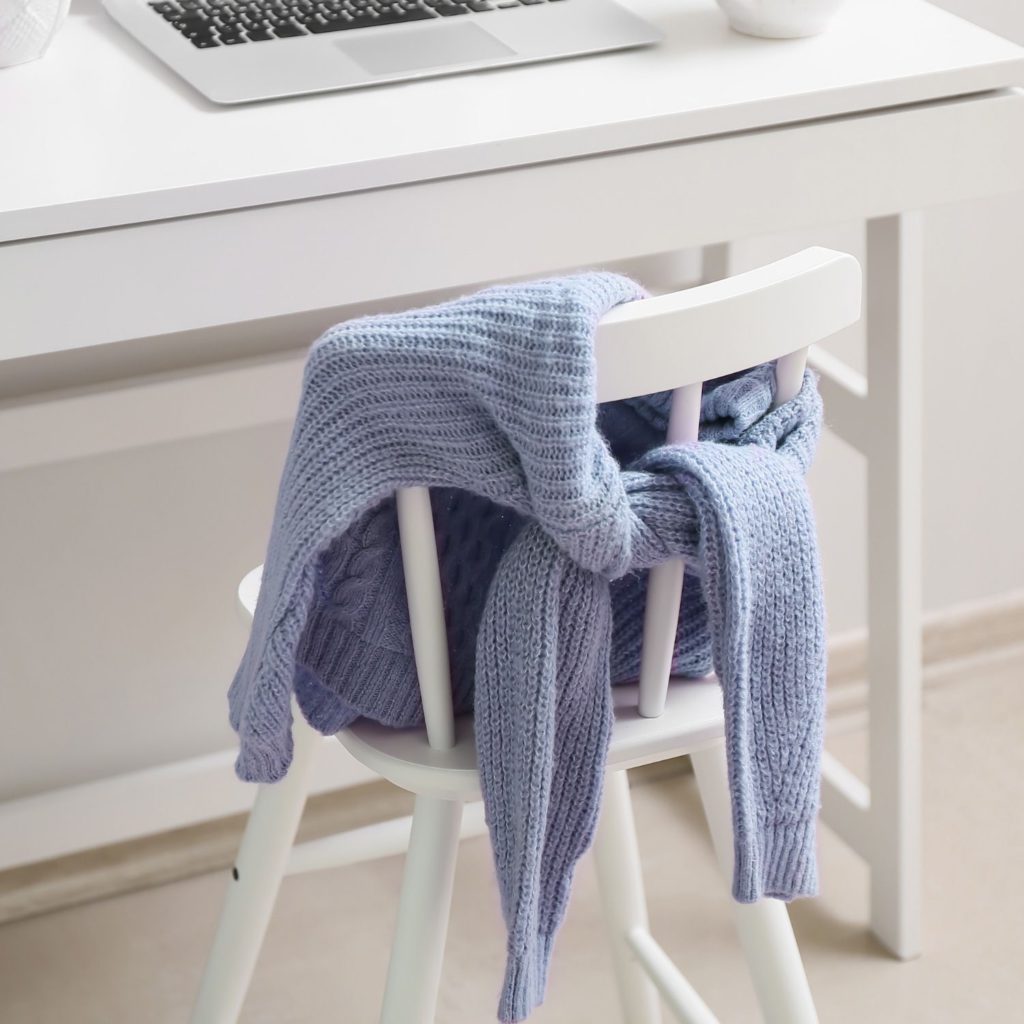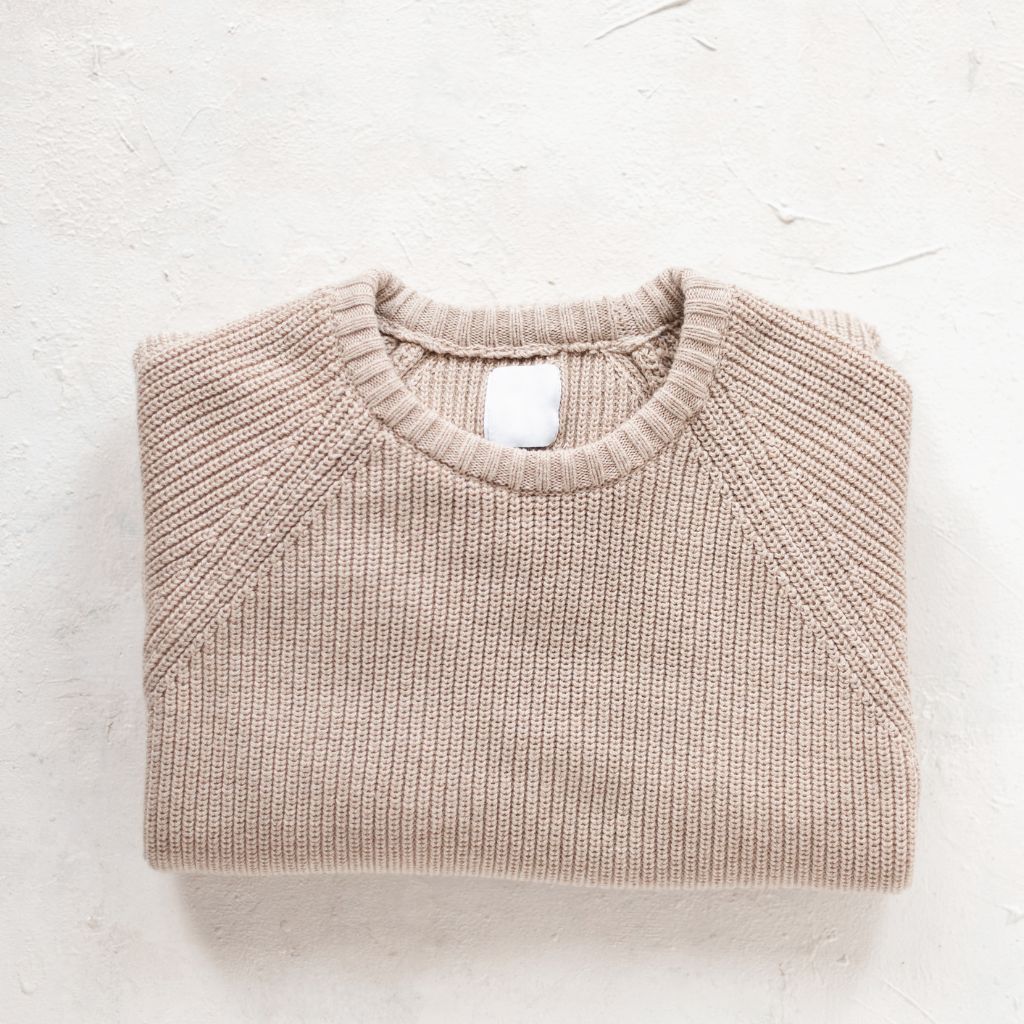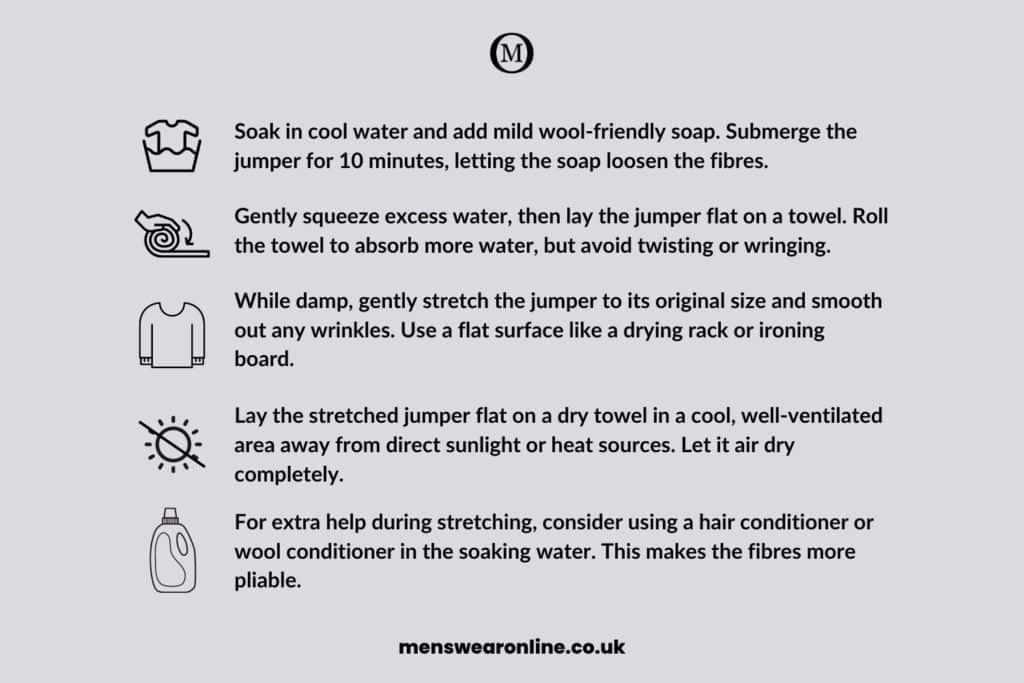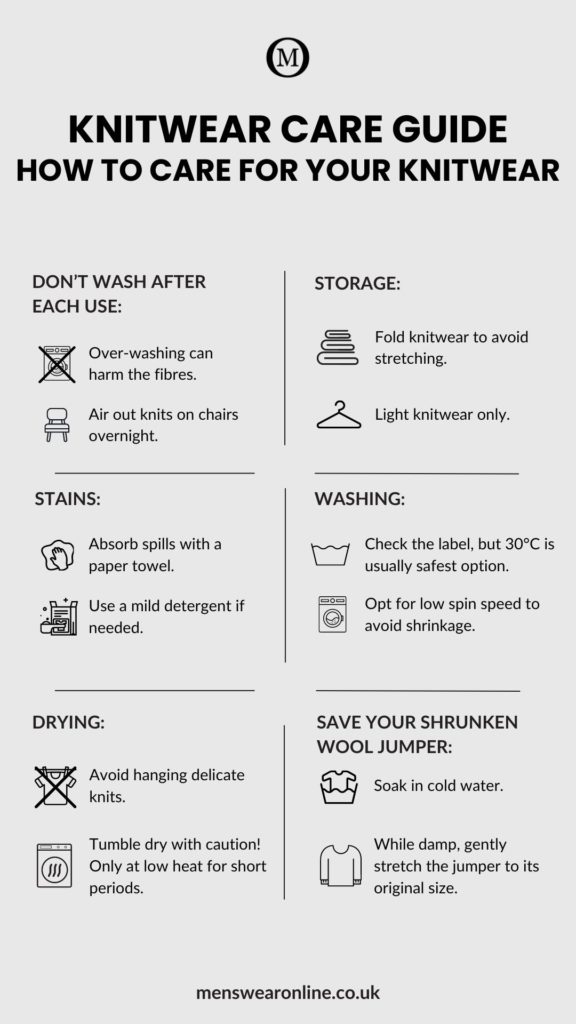Subtotal: £39.50
26 Jan How To Care For Your Knitwear
Currently studying Business Management and Marketing. Love spending my time at the cafes, trying out new drinks while reading a book.

Cozy crewnecks, crisp rollnecks – these wardrobe staples keep you warm and stylish through every chill. But while wearing them is effortless, caring for them requires a bit more attention, especially with delicate materials.
Extend the life of your knitwear with our essential care guide. This guide will walk you through steps to keeping your knitwear looking and feeling its best, season after season.
– It is not necessary to wash knitwear after every use. Over-washing can damage the fibres and cause fading.

– In order to keep the knitwear fresh, air them out overnight by laying knit on the chair or hang it loosely on a hanger.
– If your knit picks up smells, hang it outside flat (away from direct sunlight) for a few hours. Fresh air neutralises odours.
– Avoid wearing the same knit two days in a row. Let it relax and regain its shape between wears.
– Avoid direct sunlight and heat as this can fade colours and damage the fibres.
– Hanging heavy knitwear can cause unwanted stretching and ruin the original shape. Folding is the preferred method for keeping pieces in top condition.

– Place your knit face down on a clean surface.
– Bring the sides inwards to meet at the centre line.
– Fold the sleeves inwards, lying flat against the body of the knit.
– Fold the bottom hem up to meet the neckline, creating a neat rectangle.
Store folded knits in drawers or on shelves. For natural moth and insect repellent, place aromatic cedar blocks nearby.

– Choose a smooth, wide-shouldered hanger made of cedar-wood to maintain the knit’s shape.
– For long-term storage or delicate knits, use breathable garment bags to protect them from dust and pests.


– Quickly absorb spills with a paper towel or clean cloth and brush off excess food.
– Dab the stain gently with a damp cloth.
– Use cold water as it prevents fibres from expanding, minimising shrinkage risk.
– Use a mild detergent if needed.
General Tips:
– Turn the garment inside out to protect the outer surface from abrasion and fading.
– Avoid overloading the washing machine as this can lead to wrinkles and uneven cleaning.
– Wash with similar colours as this will help prevent colour bleeding.
– While 30°C is often recommended, remember that different knitwear fabrics might have unique washing needs.
– Avoid using hot water or high spin speeds, as these can cause the garment to shrink or felt.

Machine-washing
– Wash in a gentle cycle with a low spin speed.
— Cotton and linen can handle warmer water, up to 40°C, whereas wool and silk require lower temperature up to 30°C.
– Use gentle detergents formulated for delicates or natural fibres. Avoid harsh detergents with enzymes or fabric softeners, which can damage the fibres.
– Consider using a mesh laundry bag for added protection. Using a mesh laundry bag is optional but recommended for delicates.
Hand-washing
– Hand washing is recommended for wool and silk knits, especially for delicate pieces.
– Use cool water and gentle washing detergent. Rinse thoroughly with cold water.
-Air dry or lay flat to dry unless the label specifies tumble drying on a low heat setting.
– Do not hang wool or silk, as it can stretch the fibres.
Machine-washing
– Choose a delicate cycle or “synthetic” setting on your machine. Opt for cold water as hot water can shrink or distort synthetic fibres.
– You don’t need special detergent for most synthetic fibres, but avoid harsh bleaches or fabric softeners which can damage the fabric.

Hand-washing
– Some finer synthetic knits benefit from hand-washing, especially if they are prone to shrinking.
– Fill a sink with cool water and gentle detergent, swish the garment gently, and rinse thoroughly.
– Avoid high heat, which can damage synthetic fibres.
– Line drying is always the safest option, especially for delicates.
– Tumble dry only on low for short periods if allowed on the care label.
This delicate wool requires special care.
Hand-washing is preferred
– Fill a sink or basin with cool water (never hot!) and a gentle wool or cashmere detergent.
– Submerge the garment and swish gently for a few minutes. Avoid wringing or scrubbing, as this can damage the delicate fibres.

Machine-washing
– Opt for a gentle cycle with cold water and a wool-specific detergent.
– Use a mesh laundry bag to protect the garment.
– Skip the spin cycle to minimise shrinkage.
Always check the care label
– Some cashmere knits may be marked “dry clean only,” so follow those instructions if applicable.
DRYING:
– Never hang or tumble dry cashmere, as this can cause stretching and distortion. Spread the garment flat on a clean, absorbent towel and reshape it gently to its original form.
– To remove excess moisture, gently roll the garment with a clean towel, squeezing out water without wringing.
– Choose a cool, well-ventilated place to dry your cashmere. Avoid radiators or strong sunlight, as these can damage the fibres and cause fading.

– Over time, small balls of fluff, called pills, might appear on your knitwear.
– Pills are just loose fibres that tangle as your garment rubs. They’re a natural part of wearing comfy, natural fabrics, not a sign of poor quality.
– We recommend using a de-pilling comb to gently remove pills. Just glide the comb in one direction over the pilled area to whisk them away.
Explore our blog article for curated knitwear looks, from cozy classics to chic statement pieces.






Currently studying Business Management and Marketing. Love spending my time at the cafes, trying out new drinks while reading a book.
Notifications

No Comments